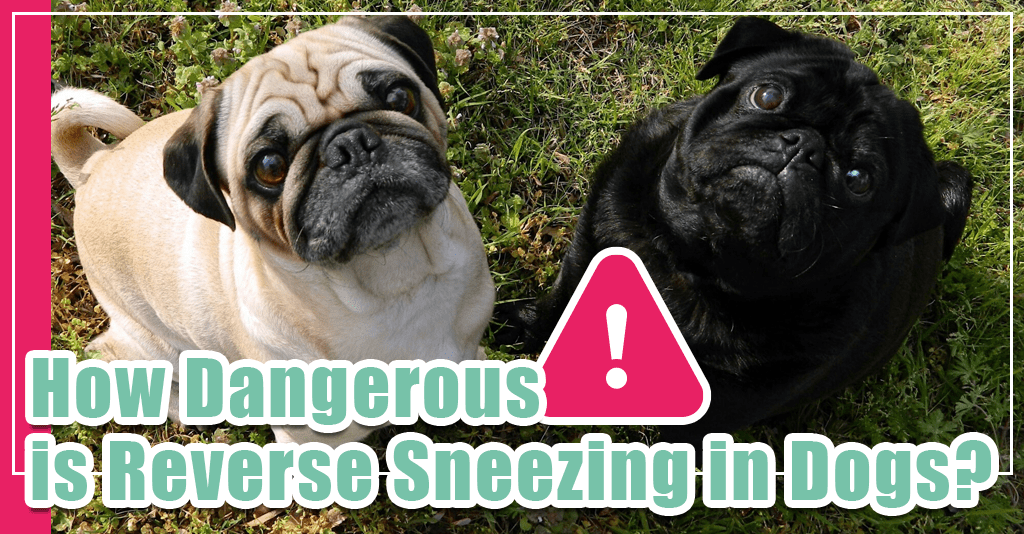If you have ever witnessed your dog reverse sneezing, you might have felt panic and worry that they couldn’t breathe. Reverse sneezing in dogs is common and has several causes. In this article, I am going to explain what is happening when your dog has an episode of reverse sneezing, why your dog has these violent episodes, and when you should worry.
What is reverse sneezing?
When people sneeze, the emphasis and primary sound is from exhalation. When dogs reverse sneeze, they are inhaling against a closed glottis. The glottis is the flap in the back of the throat that can open and close during breathing and swallowing. Because the glottis is closed during reverse sneezing the noise produced can be quite loud and scary. Usually dogs have a normal head position or they may pull their head back. If this happens to your pup, it can look like they are having trouble breathing, but usually they are getting plenty of air.
What causes reverse sneezing in dogs?
Think of reverse sneezing in dogs a little bit like people clearing their throats. There are several reasons a dog might experience reverse sneezing including:
- having a flat face (think Pugs, Boston Terriers, French Bulldogs, etc)
- allergies
- foreign bodies (grass, etc)
- post nasal drip
- sinus infections
- masses (less common)
- excitement
- pulling on the leash
- nasal mites (less common)
Is reverse sneezing dangerous?
Reverse sneezing in dogs is generally not dangerous. It may sound violent and concerning, but usually the episodes will pass without issue! You can always record an episode on your phone and show it to your veterinarian.
How should I help my dog during reverse sneezing episodes?
I see many people picking up their dog or trying to comfort them during these episodes. Imagine how you might want someone to support you if you had a sneezing fit. Usually being picked up doesn’t help and may feel even more stressful. If you are concerned that your dog isn’t getting enough oxygen, pay attention to their lip and gum color. If they are staying pink ,and not turning blue/purple, they are getting enough oxygen! Here’s my post on checking your pet’s vital signs.
If you are concerned, talk to your veterinarian about your dog’s reverse sneezing. I would love to hear from you! Leave a comment or question below!
With love,
Dr. Angie



Is it safe to give my dog that has cushions disease vetoryl and adrenal at the same time?